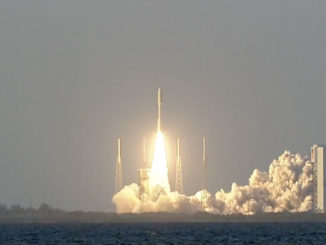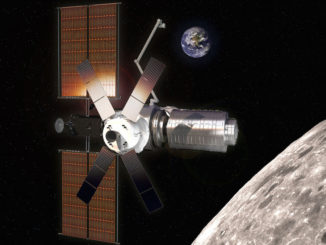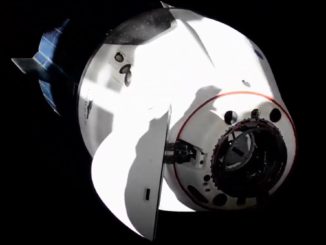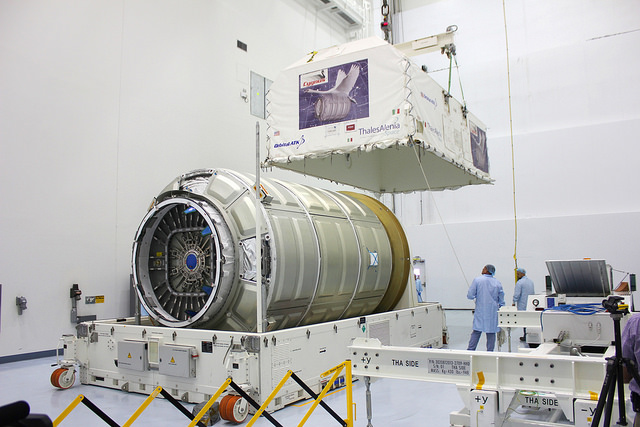
NASA has put off selecting the winners in a new competition for deals to resupply the International Space Station, prompting the agency to order two more commercial resupply missions from Orbital ATK to satisfy the orbiting lab’s cargo needs into early 2018, bringing the company’s total contract to 10 logistics flights.
Officials with Orbital ATK and NASA have confirmed the contract extension, and NASA’s space station program manager Mike Suffredini said Monday that SpaceX, the agency’s other commercial resupply contractor, is likely to also receive orders for more flights to deliver food, provisions and experiments to the outpost.
As it currently stands, modifications to 2008 Commercial Resupply Services contracts inked with SpaceX and Orbital ATK call for the companies to fly 15 and 10 missions to the space station, respectively.
In a rare move, NASA officials have declined to disclose the value of the contract extensions. The original deals were worth $1.9 billion to Orbital ATK and $1.6 billion to SpaceX, and a NASA spokesperson said the contract values, including extensions, could be up to $3.1 billion but declined to be more specific.
NASA requested new bids for cargo resupply missions last year in a fresh competition to cover the space station’s resupply demands through at least 2020, and potentially through 2024.
SpaceX, Orbital ATK, Boeing, Sierra Nevada and Lockheed Martin submitted proposals for the CRS-2 competition, according to industry officials.
NASA originally expected to award new CRS-2 contracts in May, but the winners are now scheduled to be announced Nov. 5, according to a post on the agency’s website. That is two months later than the previously expected announcement date in September.
In the update on its website, NASA said officials needed more time to review revisions to the CRS-2 proposals.
In an interview with Spaceflight Now on Monday, Suffredini said the extra missions awarded to SpaceX and Orbital ATK under their existing contracts would cover the space station’s logistics requirements in 2017 and 2018.
“When we started down the road for CRS-2, we knew that timing-wise, we were going to need to extend the contract for CRS-1 a little bit,” Suffredini said. “We needed to wait and see what our requirements were going to be. We knew that we were going ot have to add one, or maybe two years until we change over (to CRS-2) to cover 2017 and 2018 in advance.”
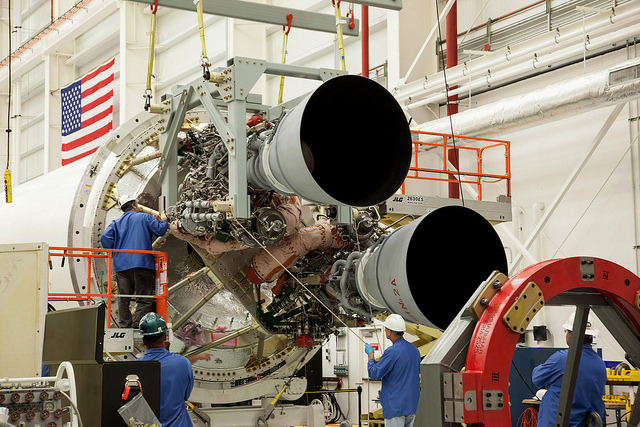
Earlier this year, NASA said SpaceX would get three additional cargo missions with the company’s Dragon supply ship. The space agency awarded Orbital ATK one additional flight for the Cygnus cargo craft.
Language in the 2008 contracts call for each company to carry up 20 metric tons, or about 44,000 pounds, of cargo to the space station.
In the wake of an catastrophic launch failure in October 2014 that destroyed a space station-bound Cygnus spacecraft, Orbital ATK managers grounded the company’s Antares rocket and purchased a United Launch Alliance Atlas 5 launcher to deploy the next Cygnus cargo mission. That launch is set for Dec. 3.
Orbital ATK has subsequently ordered a second Atlas 5 launch for another future Cygnus resupply flight.
The Cygnus spacecraft can haul up extra cargo with the more powerful Atlas 5 rocket, so Orbital ATK officials decided the company could meet its contractual requirements to deliver 20 metric tons to the space station in seven flights instead of the original eight launches.
With the Atlas 5’s lift capacity, coupled with a larger pressurized cargo module to be flown on all future Cygnus flights, Orbital ATK says the Atlas 5/Cygnus pairing allows each mission to deliver up to 3,500 kilograms — more than 7,700 pounds — to the space station.
The contract extension signed earlier this year put Orbital ATK back at eight Cygnus resupply missions, then two more flights revealed this month give the company 10 flights.
“We turned on 2017 first, and then when it looked like the (CRS-2) selection was going to move to September, we added 2018 for up-mass,” Suffredini said. “There’s probably still a little bit more that we can add in order to accommodate all (of 2018).
Orbital ATK president and chief executive David Thompson, speaking in a quarterly earnings call Aug. 6, said the two additional missions awarded to Orbital ATK extend through the 2nd quarter of 2018.
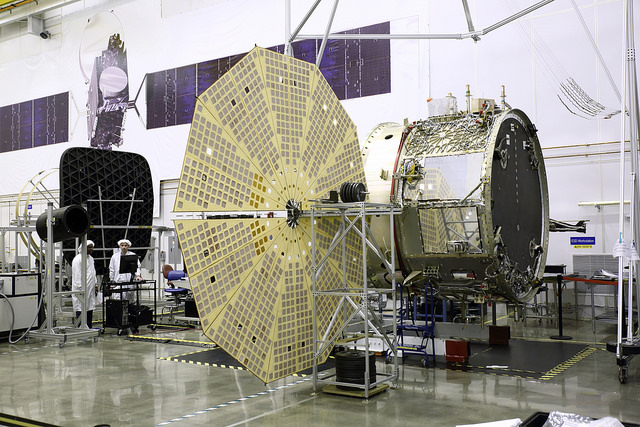
Suffredini said the original flight manifest proposed by SpaceX and Orbital ATK was sufficient to meet the space station’s requirements through the end of 2016.
“But in 2017 and 2018, we needed more up-mass if CRS-2 wasn’t moving fast enough,” Suffredini said. “We knew early on that CRS-2 wasn’t, and then when it slipped to September, and now to November, it was clear to us that we had to turn on the extra year (under CRS-1).”
NASA will likely extend its CRS-1 contract with SpaceX for more missions beyond the 15 flights already confirmed, according to Suffredini, who is leaving NASA on Sept. 9 after 10 years leading the space station program.
The rest of the space station’s supplies go up aboard uncrewed Japanese HTV cargo vessels and Russia’s Progress freighter.
NASA and the Japan Aerospace Exploration Agency have agreed to fly at least five more HTV missions to the space station through 2020, including a flight set for liftoff Wednesday. The missions will launch at a pace of about one per year.
NASA’s decision to award extra missions to Orbital ATK comes as the Virginia-based company recovers from last year’s Antares launch failure.
The accident caused Orbital ATK officials to redesign the Antares first stage booster with a new rocket engine. Investigators believe the failure, which occurred moments after liftoff from Wallops Island, Virginia, began in one of the first stage’s two AJ26 engines.
Built in the 1970s for the Soviet Union’s ill-fated N1 moon rocket program, the engines were imported to the United States in the 1990s by Aerojet Rocketdyne and selected by Orbital ATK to power the Antares booster.
Orbital ATK has purchased newly-built RD-181 engines from NPO Energomash, the same builder which supplies the highly-reliable RD-180 powerplant for the Atlas 5 rocket.
The first pair of engines arrived at the Antares rocket’s launch base on Virginia’s Eastern Shore in mid-July, and technicians have attached the engines to the aft end of the rocket’s first stage in a hangar at the launch site, according to Mike Pinkston, Orbital ATK’s Antares program manager.
Pinkston said the rest of the hardware needed to accommodate the new engines on the Antares first stage will arrive at Wallops before the end of August.
The equipment includes a new thrust frame to surround the engines and a feed line to flow propellant to the new RD-181 engines. Most of the support hardware was designed and built in-house by Orbital ATK, with engineering support from engine-builder Energomash and Yuzhmash, the Ukrainian contractor for the Antares first stage, Pinkston told Spaceflight Now last week.
Another set of two RD-181 engines is due for shipment from Russia to the United States before the end of the year, Pinkston said.
A hold-down firing of the RD-181 engines on the Wallops launch pad will occur in late 2015 or early 2016, officials said. Repairs to the launch facility from damage caused by last year’s rocket crash should be complete by the end of September.
The company is on track to be ready for three Antares cargo launches to the space station in 2016, plus the second launch of a Cygnus cargo craft aboard an Atlas 5 rocket next year.
The exact sequence of the Orbital ATK resupply flights has not been finalized, officials said.
Email the author.
Follow Stephen Clark on Twitter: @StephenClark1.

